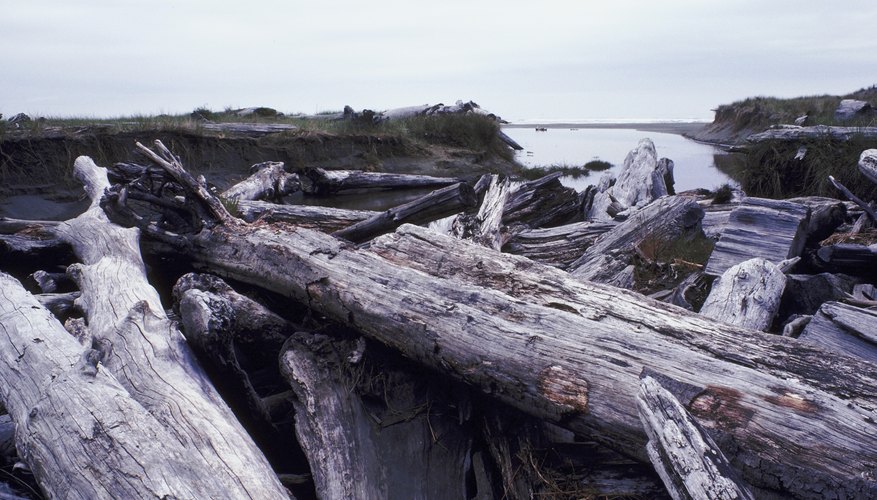Water opens up the grain of drifting wood, to emphasise its swirling patterns. Over time, the wood bends and warps into weird and wonderful new shapes. Gnarled driftwood has a strange, unearthly beauty. If you find a piece washed up on the shore, its intriguing form gives it an immediate appeal. Clean and polish a piece of driftwood and you'll gain a natural sculpture, that adds wonder and interest to your home.
Preparation
Wash the driftwood in clean water. Leave it in a warm place until it is thoroughly dry. Brush the wood briskly with a wire brush or paintbrush to remove any loose fragments. Scrape away any soft material from the surface of the wood with a chisel. Use a sharp point, such as a skewer to probe into any crack, knot-hole or fissure in the wood and remove any loose or rotten debris inside.
Rub the driftwood all over with coarse-grade sandpaper. Repeat with a medium-grade sandpaper and then with a fine-grade one. When the driftwood is as smooth as you can make it, take the paintbrush to it once again to remove any fine particles of dust.
Bring water to a simmer in a saucepan on the hob. Set a heat-proof bowl over the hot water. Put a 300g block of beeswax in the bowl to melt. When the beeswax is fully liquid, slowly pour in 250ml each of turpentine and boiled linseed oil. Stir the mixture until it is the same mellow ivory colour throughout. Remove the bowl from the heat.
Let the mixture cool, then pour it into a glass jar to set. The cooling could take some time, so the mixture is best left overnight. When the material inside the jar is an off-white, waxy solid, cover it with an airtight lid, to keep the polish you have made clean and to stop the turpentine evaporating.
- Wash the driftwood in clean water.
- When the material inside the jar is an off-white, waxy solid, cover it with an airtight lid, to keep the polish you have made clean and to stop the turpentine evaporating.
Polishing technique
Take a cotton rag and swipe it over the surface of the polish in the jar. Do this lightly, so you do not pick up too much polish. A small amount will be enough to give the driftwood its first coat. You can always add more polish later.
Rub the polish firmly over the driftwood using the rag. Follow the line of the grain, working the polish into all the nooks and crannies of the wood. Leave the wood for 20 minutes while the polish penetrates its surface. Briskly rub over the wood again with a clean rag to bring up the shine.
- Take a cotton rag and swipe it over the surface of the polish in the jar.
- Rub the polish firmly over the driftwood using the rag.
Add two or three more coats of polish in the same way as before. Always follow the grain when applying the polish and always allow time for the wood to absorb the polish before buffing it off with a clean rag.
TIP
Store your polish in a glass jar rather than a tin, as tins can rust and spoil their contents.
WARNING
Never try to melt beeswax with a naked flame. The material is highly flammable. Always use the method outlined here to melt beeswax.
